Doctoral students in Creaternity Graduate School
A graduate school at Luleå University of Technology with a focus on digitisation and circular economy to reshape society so that the UN's sustainability goals are achieved. In total, we recruit Doctoral students each year from several different countries and research subjects in the research school, which has an interdisciplinary orientation.
Sustainable water-basedlubrication for electric vehicles
Mushfiq Hasan is a doctoral student in Machine Elements, He is investigating the performance of water-based lubricants in gears and bearings application.
Where do you come from? Where have you been?
I am from Bangladesh. I was born and raised in Dhaka, a city steeped in tradition, cultureand shared human emotions. Bangladesh is known as the land of six seasons. Alongside it is also situated in the largest delta plain in the world. Therefore, it is no wonder that Bangladesh is one of the world’s hardest hit countries by climate change. Maybe this is the fact that has driven me to grow up as a sustainability minded individual from an early age. I did my bachelor’s degree in mechanical engineering from my home country. Later on, I got the opportunity to pursue a joint master’sdegree which allowed me to study in three different countries including the United Kingdom, Slovenia and Sweden.
What brought you to Luleå University of Technology?
As a part of my joint master's degree in tribology, I landed in the Division of Machine Elements at Luleå University of Technology to pursue my thesis. The division is one of the leading groups in the world in the field of tribology and now leading the green transition movement within the research field. Right after my master'sthesis, I started working as a doctoral research student in sustainable water-based lubrication at Luleå University of Technology along with project partner Volvo Carand SKF.
What is your research contribution to Creaternity?
Lubrication is a vital part of automotive industry as it reduces the friction and wear in rotating parts. The water-based lubricant (WBL) is an emerging technology with positive prospects as a sustainable alternative to fossil-based lubricants to meet the net zero demand.The transition from conventional lubricants to water-based lubricants requires new design thinking. In the doctoral project,we are investigating the limit and behaviour of these novel fluids for vehicle transmission applications. Moreover, we are trying to overcome the shortcomings of these fluids from a tribological point of view.
Why is Creaternity important?
I believe Creaternity is helping us to understand the overall sustainability challenges and how we can tackle them through scientific innovation. The graduate school is also helping us to understand the bigger picture of our project and how to contribute to society's sustainable development through our research. Moreover, the trainings and workshops on sustainability are helpful to gain more perspectives.
Where are you going?
I am trying to grow as a sustainability-minded mechanical engineer focusing on machine elements. As 20 percent of the world's total energy waste is due to friction, so I believe I have a lot of scope to contribute to our global mission of net zero carbon emission.
Myrna Cortés Morales: “Circular use of lubricants as an enabler for sustainable industry”
.jpg)
Photo: Magnus Stenberg
Myrna Cortés Morales is an Industrial doctoral student in Machine Elements, doing research on tribological performance of regenerated lubricants.
Where do you come from? Where have you been?
I come from the east coast of Mexico, where I grew up surrounded by my (quite big) family. Then, I moved to the smallest state in the country; Tlaxcala, which is a very calm and vibrant place, full of culture and history, hence why the nickname "birthplace of the nation". After traveling around the southern states of Mexico, I got motivated to work towards creating solutions to protect the beautiful nature surrounding us. With this in mind and inspired by a chemistry lecturer, I decided to pursuit a Bachelors in Nanotechnology, which only increased my interest on the impact new technologies can have on the environment.
What brought you to Luleå University of Technology?
After my bachelors, I wanted to learn more about nanomaterials and composites, so I applied for a joint masters programme in Advanced Materials Science, where LTU was one of the consortium partners. Little did I know that I would be staying in LTU for a while! After finishing the masters, I worked as a research engineer until the opportunity to apply for an industrial PhD in collaboration with LTU popped up. Since the project is closely related to the industry and sustainability, it seemed like the perfect opportunity for me to continue my professional development and make an impact that contributes to the preservation of the environment.
What is your research contribution to Creaternity?
I work with SKF RecondOil, who have developed a technology that allows to maximize the lifespan of lubricants, enabling the circular use of oil. Lubricants are the soul of machines, yet they come from non-renewable sources. Since lubricants are a cheap, disposable asset, many industries overlook how important and valuable they are, and simply dispose of them once their service life is reached. However, by implementing a process to regenerate lubricants and scaling up this technology, the potential impact and contribution to sustainability and circular economy within the industry could be huge , which also aligns with Creaternity's mission to integrate sustainability throughout the whole value chain.
Why is Creaternity important?
In order to advance as a society, we have to collaborate with each other. In this sense, Creaternity provides the space where researchers and industries come together, allowing for fruitful collaborations and expanding horizons. Through this dynamic interaction, all stakeholders contribute towards the common goal of sustainable development.
Where are you going?
Wherever life takes me! I have still some time to finish my PhD but afterwards I would like to keep contributing with my knowledge to create and promote the use of different sustainable solutions, mainly in the industry.
Sepideh Gholizadeh Khasevani: “Using bioash to remediate metal-contaminated soil”
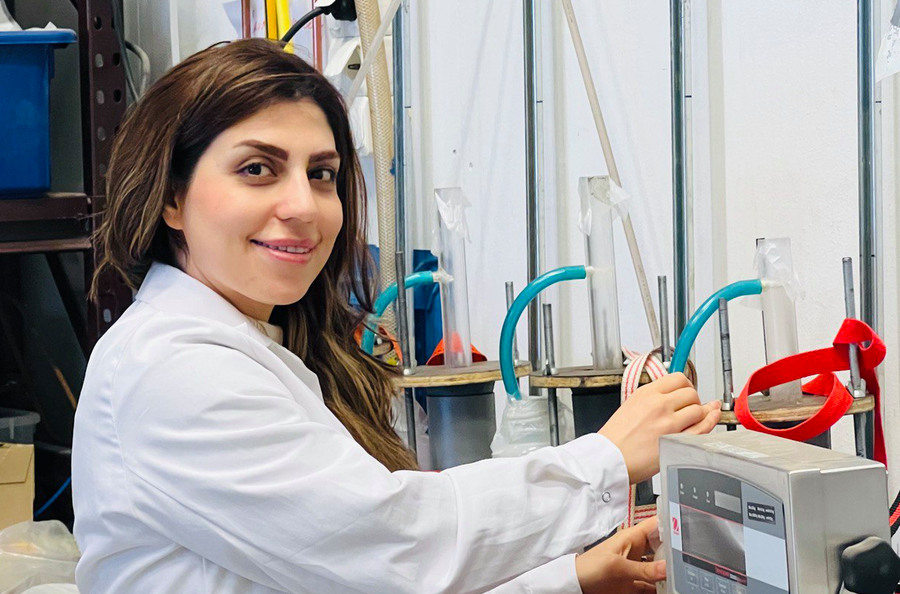
Photo: Private
My research focuses on the remediation of trace elements in soil. The title of my project is “Stabilisation and solidification (S/S) of metal-contaminated soil with bioash to promote a circular economy”
Where do you come from? Where have you been?
I come from Iran, renowned for its varied landscapes, deep cultural heritage, and ancient history, located in Asia. I was born in the northwest of Iran, in the historic city of Tabriz, but I grew up in Tehran, the bustling capital, exposed me to a diverse array of experiences and perspectives, setting the stage for a lifelong journey of discovery and learning. My academic path began at Shiraz University in Iran, where I obtained a bachelor’s degree in chemistry, starting to learn about mysteries of matter and the intricate dance of molecules. Eager to further my education and explore new frontiers in chemistry, I continued my academic journey at Sharif University of Technology in Iran. Here, I graduated on both my master’s and PhD studies. During my PhD, I had the fantastic opportunity to be a visiting student in the chemistry group at Umeå University in Sweden for six months.
What brought you to Luleå University of Technology?
After experiencing the educational system in Sweden at Umeå University, I was motivated to further my research within the country. I found a postdoc position in the material science group at Luleå University of Technology (LTU). Later, I found a Ph.D. position in the waste science and technology group at LTU. Despite it being a Ph.D. position, the prospect of researching a new topic while applying my previous experience was particularly appealing. Furthermore, it offered a fantastic opportunity to advance my research in academia. I am now pursuing my Ph.D. in the waste science and technology group.
What is your research contribution to Creaternity?
I am working on stabilization and solidification (S/S) of metal-contaminated soil with bioash to promote a circular economy. A broad range of soils worldwide are contaminated by metal(oid)s such as arsenic (As), lead (Pb), zinc (Zn), copper (Cu), and cadmium (Cd). Remediation strategies need to be developed for these soils since high concentrations of metal(oid)s pose serious threats to the environment and human health. Stabilization/Solidification (S/S) is a commonly used method to immobilize metal(oid)s in soils. This study aims to develop an S/S method for the remediation of a contaminated site in northern Sweden, with the use of bioash as a binder material, minimizing the use of cement, to use the stabilized material as construction materials. In this way two waste streams, i.e. contaminated soil and bioash, are treated to create a valuable product towards a circular economy.
Why is Creaternity important?
Creaternity stands out as a dynamic hub for fostering cross-disciplinary dialogue and cooperation, paving the way for the creation of groundbreaking ideas that merge insights from various fields. It redefines the role of a researcher by enhancing their ability to engage with different research stakeholders and illustrating the significance of integrating diverse perspectives to drive sustainable innovations. By uniting researchers from disparate backgrounds, encouraging the exchange of knowledge, and pooling collective experiences, creaternity acts as a crucial convergence point. This collaborative environment is key to sparking innovation, allowing its members to collectively pursue unified objectives from unique vantage points, thereby promoting the advancement of sustainable practices.
Where are you going?
I am keen on continuing my PhD journey to gain deeper knowledge and broader experience in my field of study. Following the completion of my PhD, my ambition shifts towards applying the insights and skills acquired during my academic tenure to the industrial sector.
Shafaq Zia: “Using ultrasound in additive manufacturing”
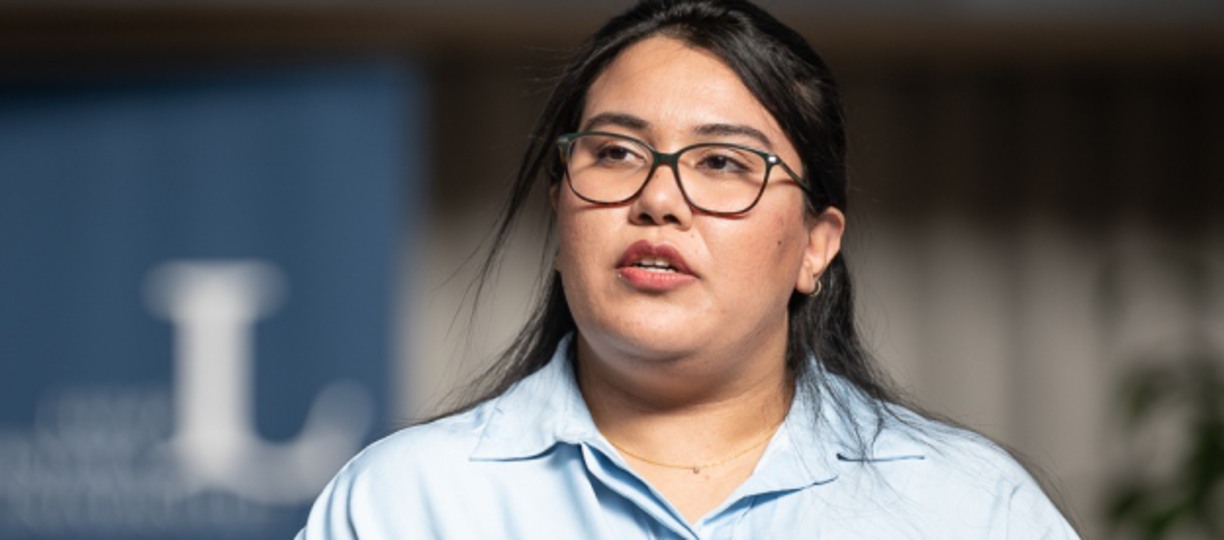
Photo: Magnus Stenberg
In the field of signal processing at Luleå University of Technology, Shafaq Zia is a doctoral student, working on developing non-destructive methods for additive manufacturing using ultrasound.
Where do you come from? Where have you been?
I come from the bustling city of Lahore, Pakistan, where the rich cultural heritage, great food and vibrant atmosphere has been a part of my daily experiences. I completed both my undergraduate and graduate studies in Electrical Engineering at COMSATS University Islamabad, Lahore Campus. It provided me a strong foundation of engineering skills and research abilities. While I've enjoyed traveling within Pakistan, my desire to explore European countries has been a driving force. Sweden, being my first international experience in a professional environment has been proven great.
What brought you to Luleå University of Technology?
I always had a desire to pursue a PhD and gain in-depth research expertise in my field. The opportunity of a new challenge by studying abroad also greatly appealed to me. Luleå University of Technology stood out as an excellent choice, particularly because of its research excellence and innovative programs. Additionally, Luleå being situated in the northern part of Sweden added to the intrigue, offering a unique blend of academic opportunities and interesting surroundings.
What is your research contribution to Creaternity?
My research focuses on developing non-destructive methods for quality assessment and process control of additive manufacturing (AM) components using ultrasound technology. By maximizing control over process and material properties in AM, we aim to reduce material waste, increase recycling potential, ensure component quality, enable custom manufacturing, and ultimately, contribute to lowering the carbon footprint of AM components' life cycles.
Why is Creaternity important?
Creaternity’s interdisciplinary approach brings together people from multiple academic and research disciplines to work together and address pressing environmental and economic challenges, paving the way for a more sustainable future.
Where are you going?
In the future, I envision myself working at the intersection of industry and applied research, where I can contribute to the development of practical solutions. I'm excited about the possibilities that lie ahead.
Mohamed Elnourani: “Unlocking the full potential of recycling tecnhologies”

Mohamed Elnourani's research project aims to amplify the efficacy of recycling strategies, focusing on the metal industry.
Where do you come from? Where have you been?
I'm from Sudan, where I spent my childhood within a few feet from the Nile. I was up in a rich Afro-Arab society and culture. My academic journey commenced with a Bachelor's degree in Mechanical Engineering from the Sudan University of Science and Technology. Subsequently, I was engaged in the oil and gas sector, principally assisting Sudanese enterprises in the implementation of quality standards and policies. My work portfolio also includes grassroots-level experiences in rural regions of Sudan, which endowed me with a profound understanding of local requirements in terms of energy and materials. In 2019, I embarked on a new chapter, relocating to Sweden to pursue a Master's degree at Jönköping University, a scenic institution by the serene Lake Vättern. Thereafter, I transitioned to Northvolt, a front-runner in the burgeoning field of sustainable battery technology.
What brought you to Luleå University of Technology?
Several compelling factors converged to guide my journey to Luleå University of Technology (LTU). First and foremost, my work at Northvolt sparked an interest in sustainable production, a subject in which LTU and Northvolt already have a partnership. Second, my Master's thesis linked to Volvo GTO and focused on optimizing manufacturing decision-making, which is a concept that also runs across ToolTrace. When LTU advertised a doctoral position that amalgamated these diverse facets, it beckoned as an irresistible opportunity. LTU itself radiates a unique synergy, fostering a climate of collaboration, openness, and creativity.
What is your research contribution to Creaternity?
My research efforts within Creaternity pivot around the nexus between human behaviour and circular economic strategies, specifically within the metal industry. Presently, we possess sophisticated recycling technologies, yet their full potential remains untapped due to behavioural and organisational barriers. My research aims to architect knowledge and decision-making tools designed to fortify collaboration between small businesses and technology providers, thereby amplifying the efficacy of recycling strategies in industrial contexts.
Why is Creaternity important?
Creaternity serves as an invaluable incubator, integrating young, curious minds from diverse disciplines but unified in purpose. The program's cross-departmental advisory structure enriches the research landscape, inviting a multiplicity of perspectives and methodologies. In essence, Creaternity operates as a multidisciplinary crucible, engaging stakeholders from academia and industry alike. This collective intelligence accelerates the deconstruction and resolution of complex issues, thereby expediting the quest for a more sustainable and resource-efficient society.
- Kontakt: Mohamed Elnourani
Stephanie Rusch Fehrmann: “My research aims to recover nutrients from Blackwater”
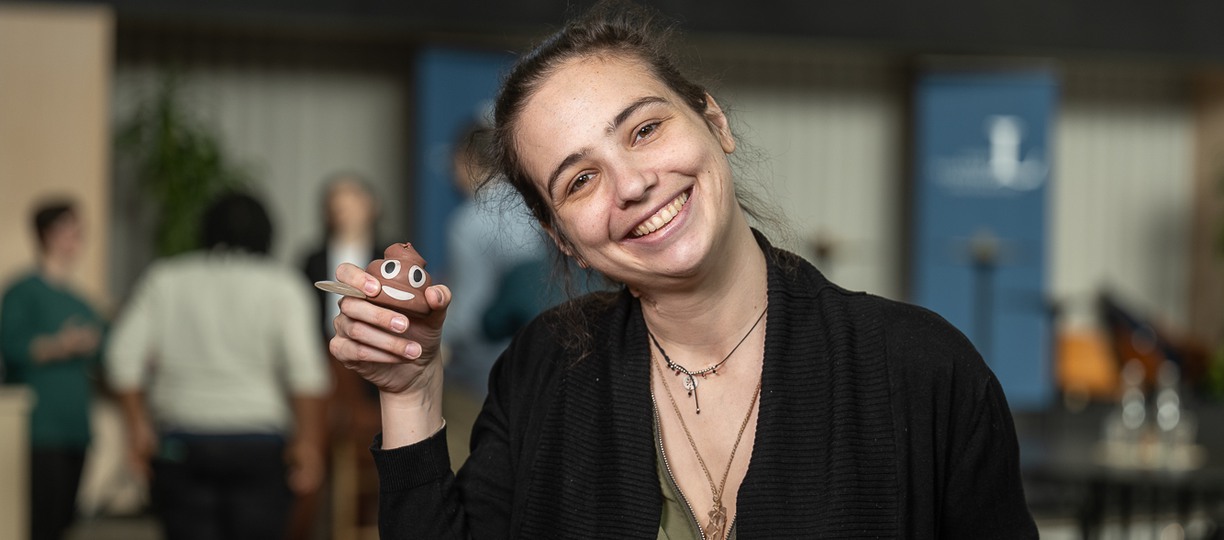
Stephanie Rusch Fehrmann's project is about recycling the nutrients in wastewater and at the same time preventing eutrophication. Collecting blackwater (Toilet water) seperatly makes it possible.
Where do you come from? Where have you been?
I am from the South of Chile. I grew up in a rural area surrounded by magnificent nature. I moved 1000 km to the capital Santiago, to study Bioengineering. I always believed that biology is a great tool to fix our environmental problems. I did my master’s in chemical and Bioprocess Engineering at the Technical University of Hamburg. While I studied, I also worked for the The Institute of Wastewater Management and Water at the Technical University Hamburg-Harburg. I finalised with my master's thesis at the University of Auckland New Zealand. Later I worked at the Technical University of Darmstadt, Germany. I moved to Luleå in September 2021 and in July 2022 I had the incredible experience of doing a work volunteer about sanitation in rural areas in Mexico.
What brought you to Luleå University of Technology?
In Chile, I volunteered for low-income adults and students and there I discovered one of my biggest passions; teaching. Later in my studies I also discovered how exciting and important research is, therefore at an early age I knew I wanted a career in academia. It was clear I needed a PhD. For me, where was not important, but the topic needed to be something special and powerful to keep me motivated for many years. When a PhD position in Luleå was announced, that combined all of my previous experiences with my expectancies of an interesting research issue, I appled. Luleå University of Technoogy is a place with a very positive energy, full of collaboration and support.
What is your research contribution to Creaternity?
To feed the urban population, farms apply fertilisers, mostly NPK (nitrogen, phosphorus, and potassium). The production of inorganic nitrogen is energy intensive and most of the time requires natural gas, while phosphorous and potassium come from mine sources. Once we consume that food, most of those nutrients end up in the toilet (blackwater). Right now wastewater streams mix blackwater with greywater (showers, sinks, wash machines, etc.). This means that the nutrients are highly diluted but at the same time, they have to be removed, to avoid eutrophication (algae blossom in superficial waters).
My research aims to separate blackwater from greywater and to concentrate it with the aim of producing a fertiliser, that not only contain NPK, but also a range of other macro and micronutrients essentials for healthy soils and plants.
Why is Creaternity important?
The network with other young researchers from very different fields but with a similar aim is for me the most important role that Creaternity plays. I also think that what enriches the graduate school, is that we need a supervisor from a different department, which makes us integrate different methods and perspectives into our research.
- Contact: Stephanie Rusch Fehrmann
Yuvarajendra Reddy: “My research is about digital twins for sustainability in Production metrology”
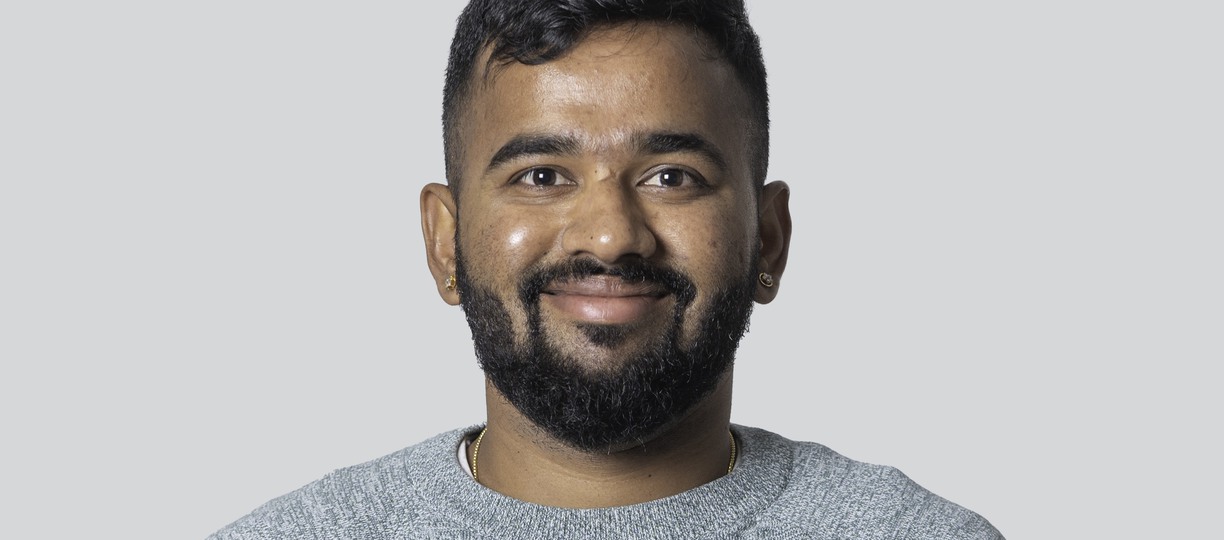
In the field of experimental mechanics at Luleå University of Technolgoy , Yuvarajendra Reddy is a doctoral student, working on developing tools for Digital Twins in production metrology sectors.
Where do you come from? Where have you been?
I am a southern Indian from a city called Bengaluru, known as the Silicon valley of India. My place is known for its pleasant-balmy weather throughout the year and its lush greenary. And, the food is unbelievably delicious and offers a wide range of varities to satisfy every taste. I am a single child, and grew up in a joint family with my grandparents. As of now, I've visited most of the Schengen countries and Balkan countries (19 to be specific) and am looking forward to visiting more. My perspective of seeing things changes as I travel, which exposes me to cultural differences, meeting strangers, experiencing nature, and, the most important, the thrill of being in a foreign place is my kind of dopamine.
What brought you to Luleå University of Technology?
Upon graduating from my hometown with a Bachelor's degree in Aeronautical Engineering, my parents technically forced me to go overseas for my master's degree just to get me out of my comfort zone. And, that's how I moved to Linköping in Sweden for my master's in Aeronautical engineering. Despite my master's, I was still not done with learning, so I considered getting another degree in Machine Learning. At that point, I discovered the PhD position at LTU, which seemed like the perfect fit for me to bridge fluid dynamics with machine learning and make a career out of it.
What is your research contribution to Creaternity?
Creaternity strives to reduce virgin resource extraction and carbon footprint by increasing the lifetime value of a product. One way to tackle this through Digitalization is by implementing Digital twins in manufacturing sectors, optimizing the resource utilization to its most. A digital twin generally consits of software platforms, algorithms, hardware components and modules of physical systems. I work on developing tools that allow Digital Twins to interact with physical systems in real-time and make decisions on the fly from empirical data and models, that bind the system to work in optimal conditions, thereby reducing wastage of resources.
Why is Creaternity important?
'The more the merrier'. Creaternity is an interdisciplinary platform, that brings many individual stakeholders from academia and industry from different areas to work on the same end goal. Creaternity promotes collaboration, that aids in breaking down the problem into simpler parts and approaching the problem with different mindset, leading to reduced R&D time in achieving carbon and resource neutral society.
Where are you going?
I would prefer the 'journey' than the 'destination'. Though, the destination is quite statisfying, it goes against the principle that I adopted 'Seek Discomfort'. At this stage of my journey, I am not particular about anything, and will base my decisions on the future developments. Industry and management are two areas, that I have on my mind, but research is 'the' area of my expertise.
- Kontakt: Yuvarajendra Reddy
Marina Corvo Alguacil: “Carbon fiber can be made affordable and sustainable”
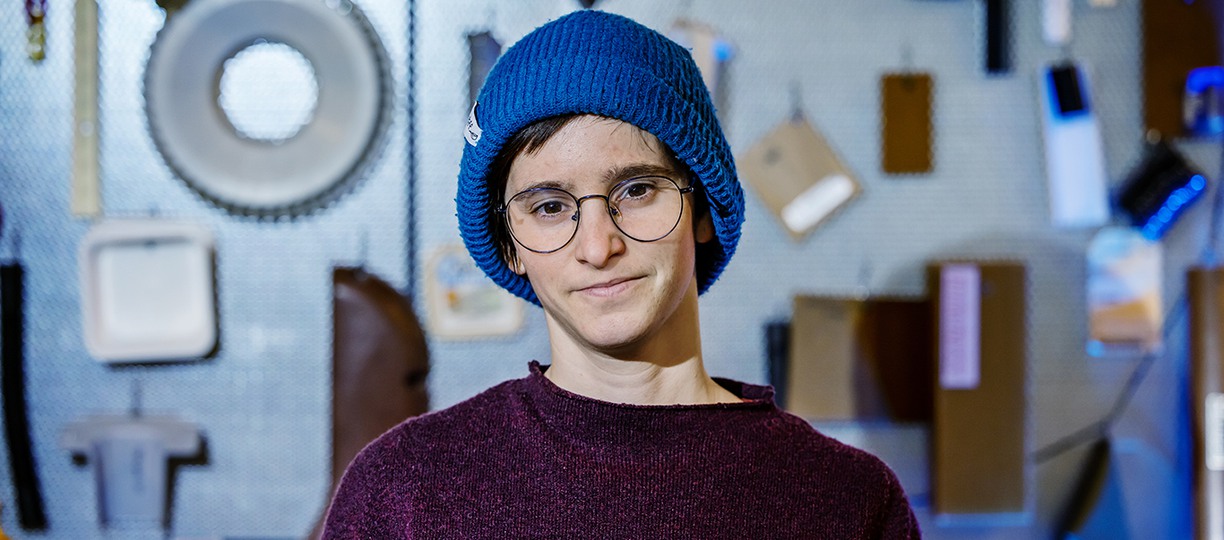
Marina Corvo Alguacil is a doctoral student in Polymeric Composites doing research on recycling of carbon fiber waste.
Where do you come from? Where have you been?
Spain is my homeland, a place of sun and warm winters. I grew up in a small community in a protected area, forest has always been my home. My family tree is big, so our gatherings are usually big and loud. During the completion of my studies, I had the chance to experience Spain, France and Sweden education systems and lifestyles. That is an experience as international student that I cherish deeply. I am a traveller by nature, a blackhole full of energy mostly spent in sports and outdoor activities.
What brought you to Luleå University of Technology?
I was in final year of my bachelor in Industrial Technologies in Barcelona (UPC) when I joined a 3 year program to become a Materials Engineer. I spent 1,5 year in Nancy (France) and finished my studies at Luleå Tekniska Universitet (LTU). After finishing I worked for 4years as engineer before taking a PhD that brought me back to the LTU.
What is your research contribution to Creaternity?
At its current state, the carbon fiber industry consumes high quantities of energy to deliver an expensive product. A product that only reaches applications where its mechanical properties make it worth the investment. My research is a contribution to a circular system for carbon fiber, an addition towards sustainability. One that provides accessible and affordable carbon fiber components. Products that can be recycled with their components re-used again and again.
Why is Creaternity important?
Connecting researchers, creating a network, sharing knowledge and combining experiences is key to innovate. Creaternity is the meeting point that will allow those associations to be made, after all, we are working together towards the same objective from different starting points.
Where are you going?
Not going anywhere, living the present is important. Once I finish I would like to establish myself in the north of Europe and go back to working for the industry. Research is what makes change possible, but it is the industrial interest what drives it forward.
- Contact: Marina Corvo Alguacil
Daria Kolbas: “Friction and wear testing contribute to the long-term safety of nuclear reactors”
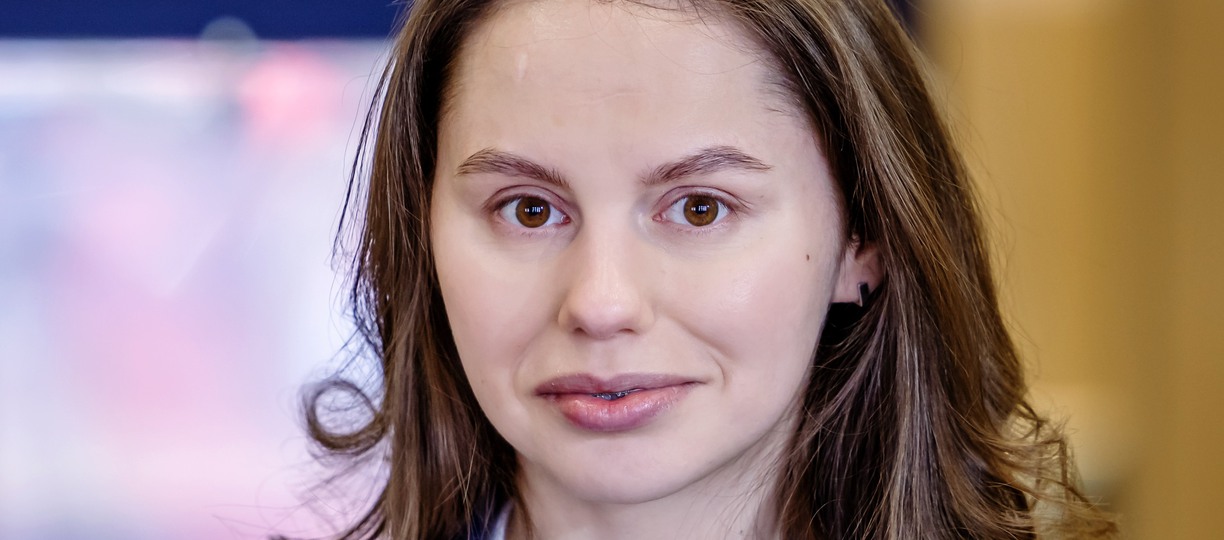
Daria Kolbas is a doctoral student in Machine Elements doing research on friction and wear material testing for nuclear reactors.
Where do you come from? Where have you been?
I am Russian, and even given my country's reputation, I believe that our culture and traditions have helped me become a curious, open-minded, and caring person. I did my bachelor's and master's degrees at the University of Oil and Gas, which helped me become a big proponent of all types of alternative energy production methods other than fossil fuels. During my studies, I got the opportunity to work in a research center in Austria. The environment of an international scientific organisation gave me the dream of at least trying my hand as a member of a research team.
What brought you to Luleå University of Technology?
I was looking for a project where my knowledge and experience can be applied. The position description in LTU looked like a perfect match, as it not only aligned with my background but also corresponded with my interest. Couple it with the most friendly and nice interview known in my informational bubble, and we get me starting the second year of PhD at LTU.
What is your research contribution to Creaternity?
My research is the integrated part of a SUNRISE project which is aimed to design a small modular lead-cooled research reactor. In the project, we are motivated to show how safety, circularity, and sustainability became the highest priority and integral parts of all nuclear-connected research projects. Material testing to friction and wear resistance (our CiNEMaT project) provides information about the degradation mechanism and behaviour of materials under the operating conditions of the reactor. Therefore, we contribute to improved long-term safety and productivity for the next generation of nuclear reactors and share trustworthy scientific knowledge about the modern state of nuclear energy.
Why is Creaternity important?
Creaternity is about broadening horizons in understanding what it means to be a researcher and how to communicate between the stakeholders of our research. The perspectives of people from different fields show how interconnected our research can and should be for implementing innovations with sustainability in mind.
Where are you going?
On my way to completing a worthwhile research project. I believe I am exactly where I wanted to be, and making an effort to both enjoy the journey and achieve decent results. Once I finish my PhD, I would like to continue working in this field, and there is still time to decide whether it will be industry or academia.
- Contact: Daria Kolbas
Haiman Hu: “I develop sustainable solid-state lithium-ion batteries”
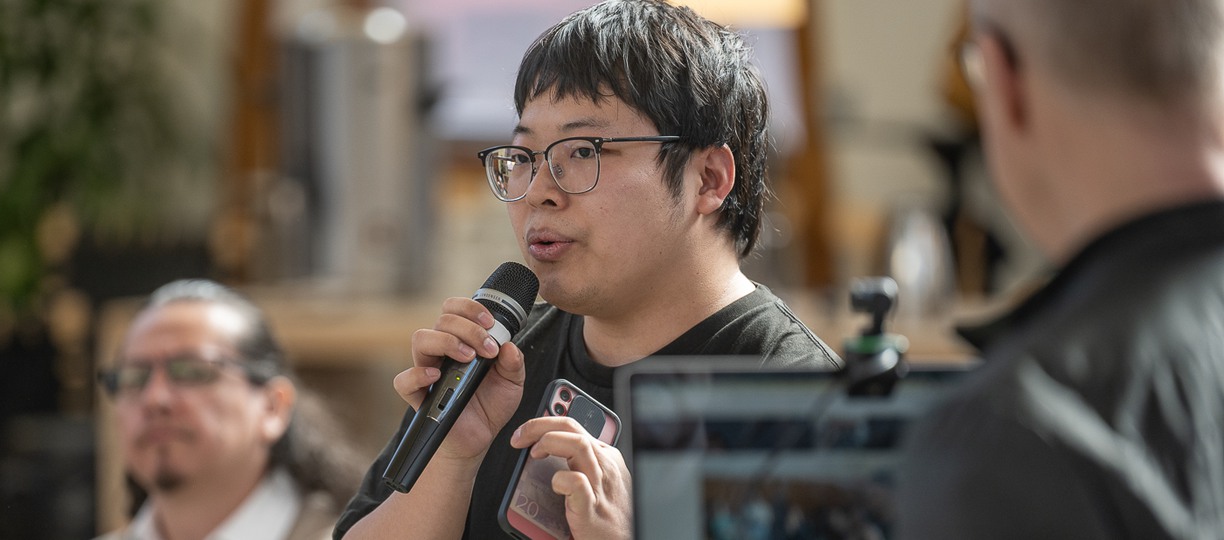
Haiman Hu is a doctoral student in Energy engineering, working on developing sustainable solid-state lithium-ion batteries.
Where do you come from? Where have you been?
I come from China, a mysterious and ancient country. The third longest river in the world, the Chang Jiang River, flows through my hometown, so we have a lot of activities about fishing and a lot of ways of cooking fish. During my master's, I devoted myself to the research of carbon materials in batteries in materials chemistry at Fuzhou University, which helped me learn more knowledge and aroused my interest in biomass materials. Afterward, I went to Sweden for further study and experienced a different education system and way of life, which was a very interesting and precious time.
What brought you to Luleå University of Technology?
LTU's job description matched my background and interests. It is located in the north of Sweden, where a lot of biomass materials could be further utilised and developed. Therefore, joining LTU to develop bio-based sustainable battery projects in this area is very suitable.
What is your research contribution to Creaternity?
Nowadays, most biomass residues and wastes, such as metal elements (Co, Ni, Mn, etc.), cellulose, lignin, SiOx, etcetera, are incinerated and landfilled without being well utilised. My research develops sustainable high-energy density Li-ion batteries using bio-based and recycled materials. It can reduce battery manufacturing costs and increase battery sustainability.
Why is Creaternity important?
Creaternity has established a platform for interdisciplinary communication and collaboration, enabling us to generate innovative ideas that combines with other disciplines.
Where are you going?
Not sure yet where to go, I still have a lot of time to consider it. When I finish my studies, I would like to do basic research in academia and cooperate with companies to solve some practical problems.
- Kontakt :Haiman Hu
Updated:
